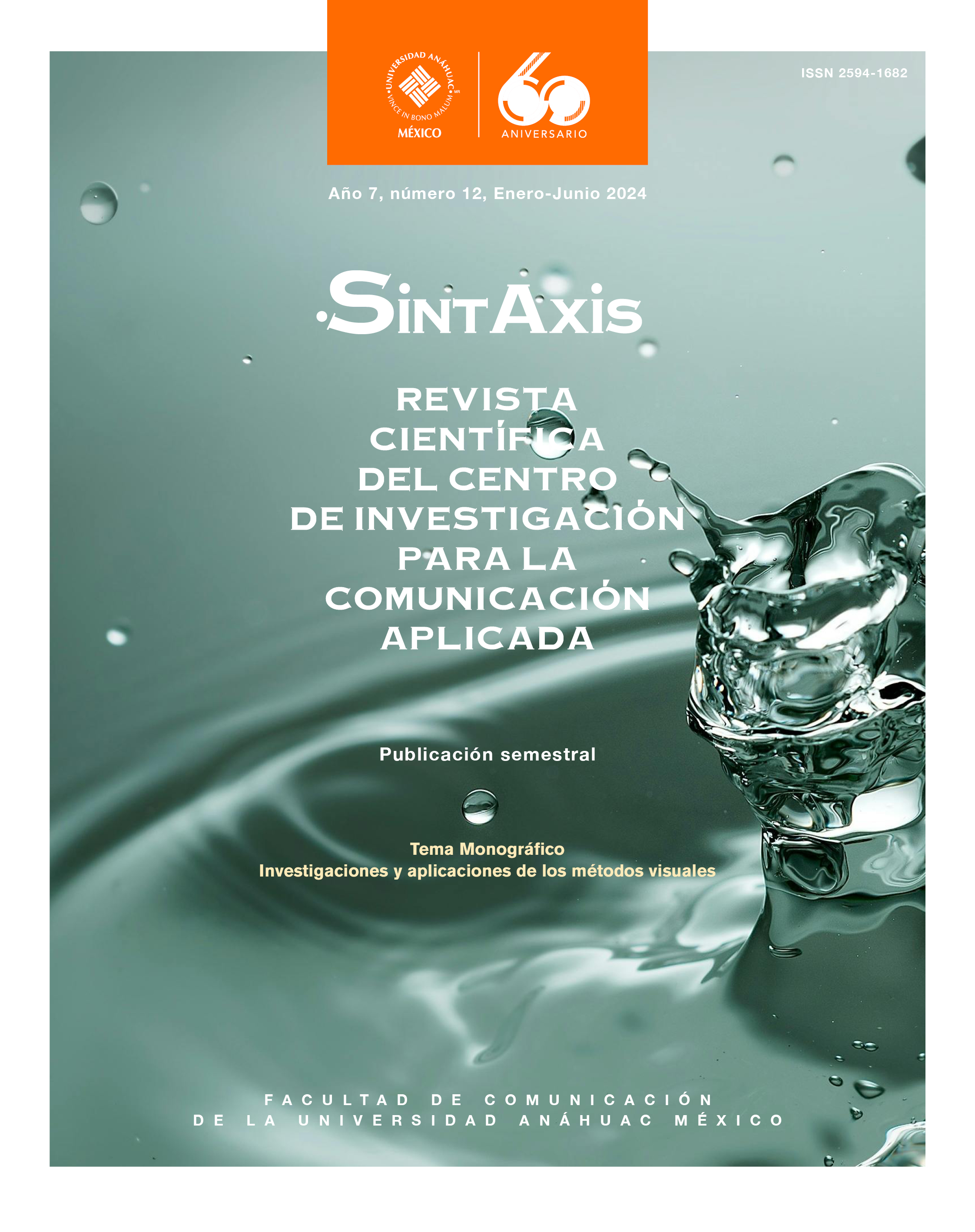The visual representation of the hologram: a comparative approach to its political and social uses
Main Article Content
Abstract
On April 28, 2017, Jean-Luc Mélenchon, a prominent French politician, pioneered a unique way of engaging with multiple groups. While he was in Dijon in person, he simultaneously connected with a Grenoble audience using a hologram. A central focus is the tangible bond between a politician and their listeners. This study starts by analyzing the semiotic cues in photos and videos on official and social platforms. Subsequently, there’s a deep dive into the reactions of Grenoble attendees to various forms of expression.
Each method is integral to the total experience. As suggested by Kress and Van Leeuwen (2001), meaning is molded socially via channels like discourse, production, design, intake, and the “textual” backdrop. In M.lenchon’s holographic instance, the scope for creative engagement and the idea of heightened modality is evident (highlighted by Andrieu: 2011). Holography offers:
• Voice-driven auditory engagement.
• Observation of physical actions, hand movements, and facial expressions.
• Recognition of visual elements such as clothing, colors, and proportions.
• A three-dimensional display, evoking a feeling of actual presence.
• Interaction with the spoken content, both pre-written and extemporaneous.
This is termed as hypermodal interaction. Designing a tailored hologram in line with the core research question effectively combined theoretical perspectives on holographic interaction. The goal wasn’t merely a visual portrayal of the research but to emphasize this visual method, especially in formulating a visual strategy (as put forth by Pink, 2006). This process captures both visuals and sounds for subsequent engagements with holograms. Furthermore, this research seeks to outline and present the aspects of an innovative, immersive, and visually centric research approach.
Downloads
PLUMX Metrics
Article Details

This work is licensed under a Creative Commons Attribution-NonCommercial-NoDerivatives 4.0 International License.
The author keeps the property rights with no restriction whatsoever and guarantees the magazine the right to be the first publication of the work. The author is free to deposit the published version in any other medium, such as an institutional archive or on his own website.
References
Alonso, A. (2016). El holograma como experiencia artística. Research, Art, Creation, 4(2), 168-186. https://doi.org/10.17583/brac.2016.1700 DOI: https://doi.org/10.17583/brac.2016.1700
Benyon, M. (1992). Do We Need an Aesthetics of Holography? Archives of Holography: A Partial View of a Three-Dimensional World: Special Issue, 25(5), 411-416. https://doi.org/10.2307/1575745 DOI: https://doi.org/10.2307/1575745
Bueno, J., Chabert, G., y Lamboux-Durand, A. (2017). Applying visual methods to digital communication. Cuadernos Artesanos de Comunicación, cac137. La Laguna, Tenerife: Latina. http://www.cuadernosartesanos.org/2017/cac136.pdf
Bühler, K. (1965). Sprachtheorie. Die Darstellungsfunktion der Sprache. Jena: G. Fischer.
Caufield, H. (2004). The Arte and Science of Holography: A Tribute to Emmett Leith and Yuri Denisyuk. Orlando: SPIE Press. DOI: https://doi.org/10.1117/3.2265060
Dados Negros. Centro de holografía y artes (s.f.). Introducción a la holografía. http://www.dadosnegros.com/centro-de-holografia-y-artes/introduccion-holografia/
Johnston, S. (2008). A Cultural History of the Hologram. Leonardo, 41(3), 223-221. http://www.jstor.org/stable/20206585 DOI: https://doi.org/10.1162/leon.2008.41.3.223
Kuspit, D. (2006). Arte digital y videoarte: transgrediendo los límites de la representación. Madrid: Círculo de Bellas Artes. https://www.uv.es/~francas2/doc/textodoc15.pdf
Mannay, D. (2017). Métodos visuales, narrativos y creativos en investigación cualitativa. Madrid: Narcea Ediciones. https://sede.educacion.gob.es/publiventa/PdfServlet?pdf=VP18427.pdf,area=E
M de Certeau. (1984). The practice of everyday life. Berkeley: University of California Press. (Original work published as L’invention du quotidien, tome 1. Paris: Arts de faire 10/18, 1980). https://monoskop.org/images/2/2a/De_Certeau_Michel_The_Practice_of_Everyday_Life.pdf
Méthodes visuelles, de quoi parle-t-on ? Images fixes. (2017). https://hal.archives-ouvertes.fr/hal-02473599
Pitts, M. (1990). The Holographic Paradigm: A New Model for the Study of Literature and Science. Modern Language Studies, 20(4), 80-89. https://srhe.ac.uk/arc/12/0168.pdf DOI: https://doi.org/10.2307/3195062
Pink, S. (2010) The future of sensory anthropology/the anthropology of the senses. Social Anthropology/Anthropologie Sociale, 8(3), 331-340. https://www.researchgate.net/publication/249487718_The_Future_of_Sensory_Anthropologythe_Anthropology_of_the_ DOI: https://doi.org/10.1111/j.1469-8676.2010.00119_1.x
Senses
Pink, S. (2003). Doing Visual Ethnography: images, media and representation in research. London: Sage. https://www.researchgate.net/publication/266721562_Doing_Visual_Ethnography_Images_Media_and_Representation
Silva, J., Bairon, S. (2007). Antropologia Visual e Hipermedia. Porto: Ediçoes Afrontamento. https://www.academia.edu/37318732/Antropologia_Visual_e_Hipermedia
Sucari J. (2012). El documental expandido: pantalla y espacio. Barcelona, España: Universitat Oberta de Catalunya. https://www.tdx.cat/bitstream/handle/10803/52895/GJSC_TESIS.pdf
Weissberg J. (1999). Présences à distance-déplacement virtuel et réseaux numériques. [At distance presence-virtual move and digital networks]. Paris: L‟harmattan, Coll Communication et civilisation. https://www.persee.fr/doc/reso_0751-7971_1999_num_17_97_2175_t1_0292_0000_1


